Don't be a Gutter Bunny
 Mon, October 17, 2011
Mon, October 17, 2011  Gutter Bunnies are timorous little creatures; they ride their bicycles hugging the right hand side of the road, afraid to get out of the gutter even when the road is plenty wide enough for cars to pass safely.
Gutter Bunnies are timorous little creatures; they ride their bicycles hugging the right hand side of the road, afraid to get out of the gutter even when the road is plenty wide enough for cars to pass safely.
Clinging to the right hand edge of the road gives the Gutter Bunny a false sense of security; but their curb hugging habits actually place them in greater danger. Here are a few examples why.
 1.) Cars will buzz by Gutter Bunnies like they are not even there. Not slowing down or deviating from their line of travel.
1.) Cars will buzz by Gutter Bunnies like they are not even there. Not slowing down or deviating from their line of travel.
Believe it or not there are Car Driving Gutter Bunnies, who habitually drive with their passenger side wheels trimming the grass at the side of the road.
So if a driver buzzes on by a Gutter Bunny without so much as a touch of his brakes, or deviating from his line of travel, and he just happens to be followed much too closely by Car Driving Gutter Bunny.
Guess what?
The Car Driving version will not even see his bicycle counterpart until he slams in the back of him.
 To avoid this situation: Ride 18 inches or so out from the edge of the road; more if the lane width allows it. (Picture right.)
To avoid this situation: Ride 18 inches or so out from the edge of the road; more if the lane width allows it. (Picture right.)
The first car passing will have to make a conscious effort to steer a course around you, this will alert following cars of your presence, and they too will usually follow the same line as the first car.
2.) In this next scenario a Gutter Bunny is riding along a road and is approaching a turning to his right.
A car is racing up this side road at a high rate of speed and it appears he may not stop at the intersection.
The driver does not even see the Bunny approaching on his bike as they have a tendency to blend in with the landscaping. (Below left.) The cyclist is not even sure if the driver entering the highway is turning left or right.

If there is no traffic immediately behind the cyclist, he should move out to the center of the lane, this gives the car driver more opportunity to see the cyclist. (Above right.)
Should the car make a right entering the cyclist’s lane and moving away from him; the cyclist can pull towards the center of the road, or even go into the opposing lane if the is no approaching traffic from the opposite direction. (Below left.)

If the car should make a left turn crossing the cyclists path, the cyclist can pull hard to the right and go behind the offending car. (Above right.)
3.) Similarly, a car driver approaching from the opposite direction and making a left turn into the side road, may not notice the Gutter Bunny as he creeps the extreme edge of the highway. (Below left.)
The Bunny too is off somewhere in his own little Bunny world, daydreaming about little girl bunnies, or whatever. As he pedals across the intersection the car makes his turn and our Bunny is knocked into the middle of next week. (Below right.)

The Bunny may see the car turn at the last moment and try to stop or swerve hard to the left, but he still slams into the side of the vehicle.
Again if there is no traffic behind, the cyclist should move to the center of the lane; in all probability the driver of the left turning car will now see the cyclist. (Below left.)
Alternatively, another car may come up from behind the cyclist which would be his safety buffer; the opposing driver will not turn if there is an approaching car. The cyclist can then signal and move over to the right again as he clears the intersection, allowing the car behind him to pass.

In the worst case scenario, (Above right.) the car still makes its left turn, but the cyclist by positioning himself in the center of the lane has the opportunity to pull left also and go harmlessly behind the offending vehicle.
4.) Finally the dreaded Right Hook: This is where a cyclist is riding straight ahead, but a car passes him then turns right in front of him. The Gutter Bunny leaves himself no room in this situation. (Below left.)

(Above right.) If the cyclist once again is riding out in the lane away from the curb, in all probability the car driver will not pass the cyclist. However, don’t count on it. But at least the cyclist has some room to maneuver and if he makes a hard right also, he may not be going in the direction he intended, but he at least avoided a collision.

In a situation where there is a left turn lane (Above.) the Gutter Bunny will often follow the right hand edge of the road even if he intends to go straight. This is asking for a right hook as following vehicles assume the cyclist is also turning right.
If the cyclist intends to go straight he should stay in the appropriate lane and allow other vehicles turning right to pass on his right.
By riding the extreme edge of the road cyclists leave themselves nowhere to go should they be crowded out by another vehicle. There is either a curb to the right, or the edge of the asphalt drops off sharply or parts of it may be broken or missing.
Claim your space on the highway; always be predictable and let your intentions be known with clear hand signals. A simple turn of the head to look behind will speak volumes to a following car driver that you intend to change direction.
 Dave Moulton | Comments Off |
Dave Moulton | Comments Off | 





















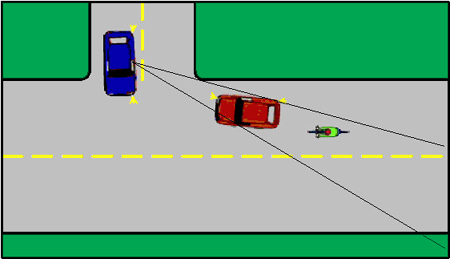
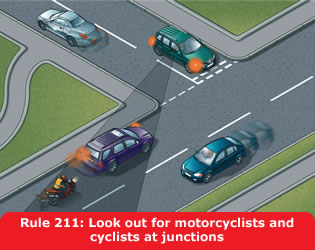
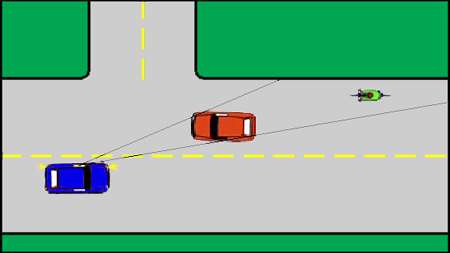
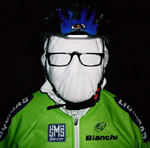
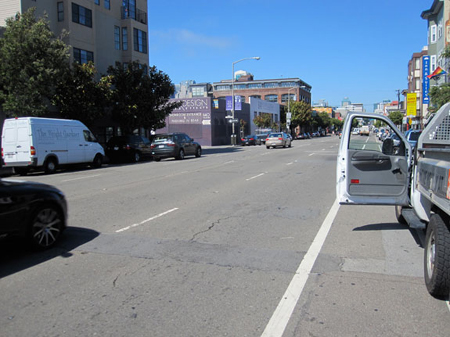


Do we need sidewalk cycling advocates?
The above video ridicules the League of American Bicyclists for advocating that riding a bike on the sidewalk is dangerous. The commentator suggests that if riding on the sidewalk is dangerous maybe we should all put in a few hundred miles on the sidewalk to sharpen our sidewalk riding skills.
The video then shows a bike switching from the road to sidewalk and back again as he sees fit. The commentator points out that a bicycle is maneuverable and can do this. Just because you can doesn’t mean you should; this is the whole problem with some who ride bikes. Rather than stop and start again they maneuver around obstacles; like slowing or stationary traffic, or pedestrians in crosswalks.
In my book, switching from the road to the sidewalk and back is one of the worst kinds of cycling behavior; choose where you are going to ride and stick with it. Children are allowed and encouraged to ride on the sidewalk, and rightly so. They are mostly traveling at a walking pace, and are probably not riding in a straight line.
If a parent is accompanying a child they too should be on the sidewalk with them, making sure they stop at intersections and other danger points. If you are a raw beginner on a bike you should probably start out on the sidewalk until you have mastered the basic bike handling skills.
It is not so much where you ride that is dangerous it is how you ride. If you ride on the sidewalk you are not going to get run down from behind by a car; however, there is a greater potential at every intersection for a collision. And whether you are on the road or the sidewalk most collisions happen at intersections.
Cars turning right into a side road or driveway, or making a left from the opposite direction are not looking for cyclists on the sidewalk, especially if the cyclist is coming from the wrong direction. Cars entering a road from side roads or parking lots often have to pull completely up to the curb or stop sign in order to see what is coming, because of trees and bushes obstructing their view.
Most places it is illegal to ride on the sidewalk; for this reason you shouldn’t do it. If a car hits you at an intersection, the driver’s insurance company will probably not pay damages, because you were riding illegally. If you are on the sidewalk you should be riding slowly, probably no more than 8 mph; to avoid injuring pedestrians and so you can stop on a dime when cars suddenly emerge from parking lots.
If there is a situation like in the video where there are sporadic parked cars, the cyclist should not be fully in that lane anyway, but rather giving a hand signal in plenty of time and moving into the next lane to pass the parked car as any other vehicle would.
To hop on the sidewalk is all well and good, but what happens when there is no driveway ramp at that point; you suddenly have to do a slalom move out into the path of other traffic. Or what happens if you hop on the sidewalk and a pedestrian steps out in front of you, or a car suddenly appears from a driveway.
If people choose to ride a bike they need to decide whether they are to be a pedestrian on a bike, (POB.) riding at a walking pace on a sidewalk; or a real cyclist riding exclusively on the road following the same rules and protocol as all other road users.
The constant complaint I hear from motorists is that cyclists make up their own rules and ride whereever and however they please. We don’t need videos encouraging people to behave in this manner.